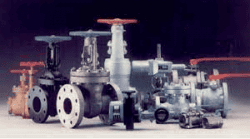Mechanical components are the backbone of any industrial machinery or device. They reduce friction and change input and output forces, carry loads for linear and rotary motions, and perform specific functions. Some of the more common mechanical components include motors, gears, bearings, and gear boxes. Let’s look at these components in more detail. What are the benefits and drawbacks of each?
As the industrial machinery industry continues to evolve, its design and manufacturing processes must change. The rise of IoT and automation, combined with increased customization, poses challenges for the industry. Today’s automated products require complex mechanical, electrical, and software controls. Those systems often require the use of advanced sensors, as well as a high degree of software validation. In addition, companies need to consider the impact of COVID-19 and other societal issues on profitability.
Linear motion transducers measure movement along a linear path. They convert this movement into an electrical signal. Linear motion transducers are widely used in industrial machinery, including for electric actuator drives, hand held controls, and high-end flight simulators. Their versatility also allows them to work in difficult environments. For more details on Industrial Valves, visit a site like orseal.com/
Whether you’re interested in manufacturing industrial machinery, or simply in learning more about its inner workings, a career in industrial machinery is likely to be rewarding and stable. The machinery and component industry offers a variety of job opportunities, and you’ll never be short of work opportunities.
For many components of industrial machinery, a high degree of wear and tear is expected. These parts need maintenance in order to compensate for the wear and tear, and replace sacrificial and consumable elements as needed. The process of maintenance can be classified into three broad categories, based on the ease and cost of replacement. Predictive maintenance is the most cost-effective mode of maintenance.
Couplings are used to couple rotating pieces of equipment. They allow some degree of end-movement and misalignment. A sleeve coupling is a pipe that fits into a keyway. Another type is a clamped coupling, which is split down the middle. The keyway in both types allows torque to be transmitted from one end to the other. In terms of cost, rigid couplings are an affordable and easy-to-use option. The advantage of the sleeve style is that it’s easier to install and maintain. They also reduce production costs.
As you can see, there are countless essential components that are required to keep industrial machinery functioning, as well as considerable effort required to maintain these components to reduce downtime and expense.


